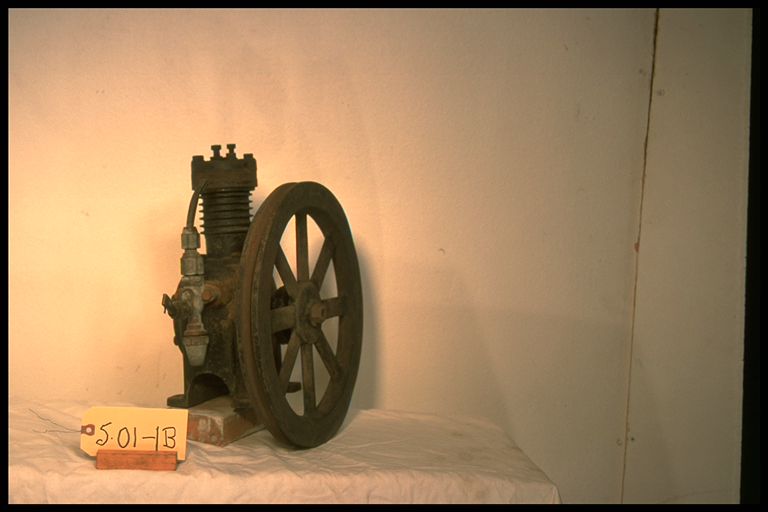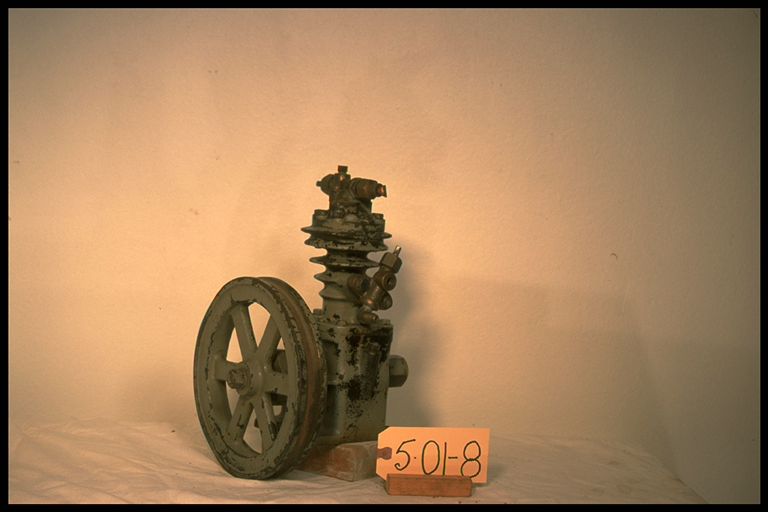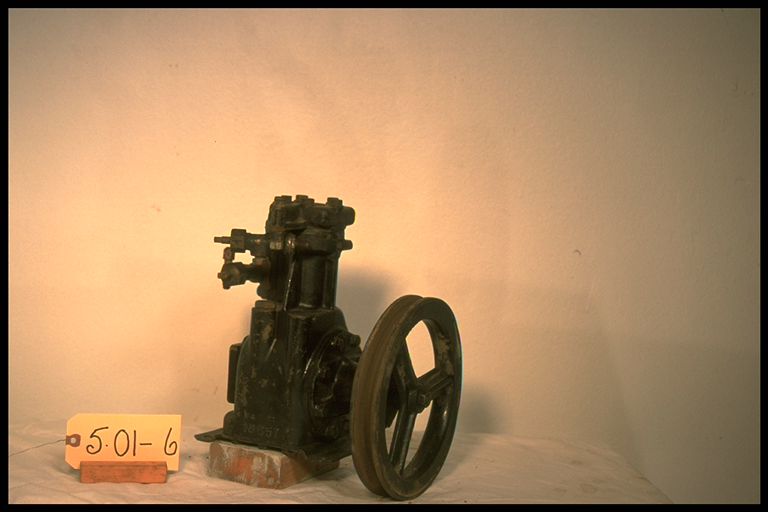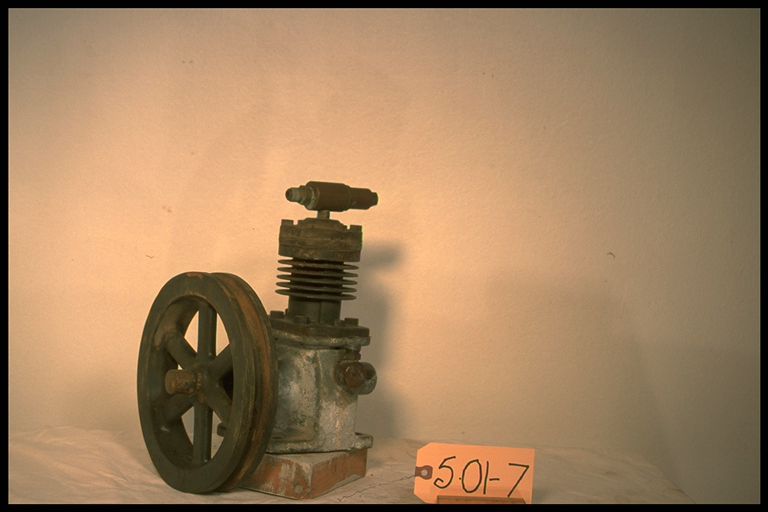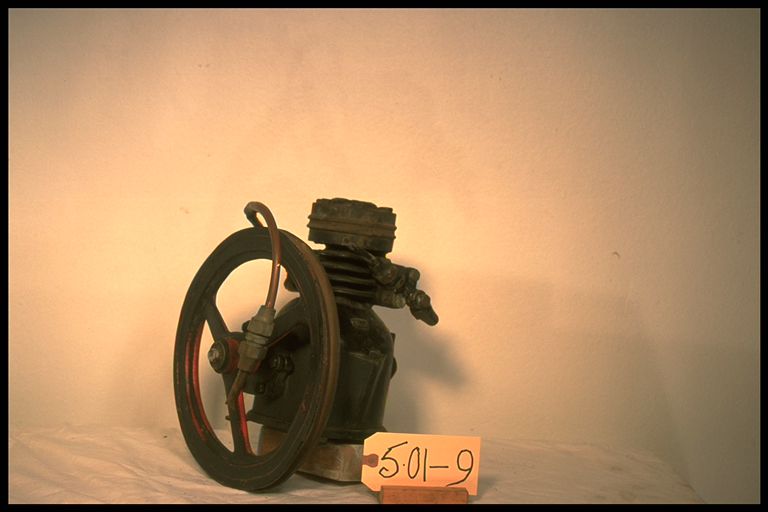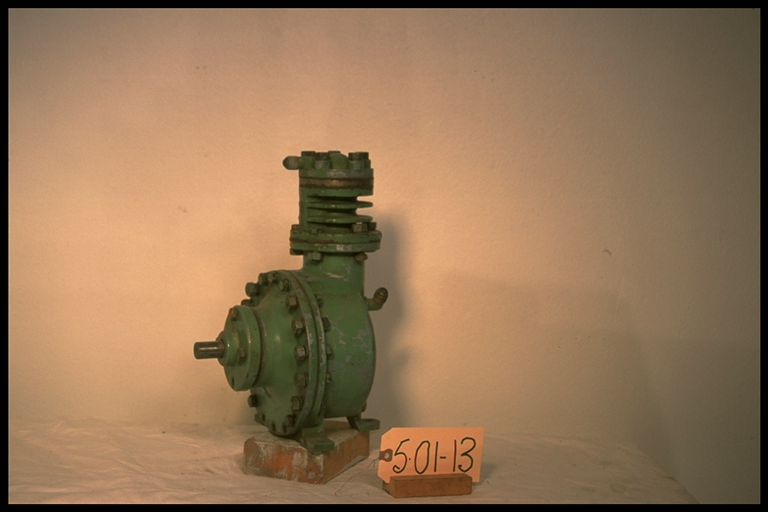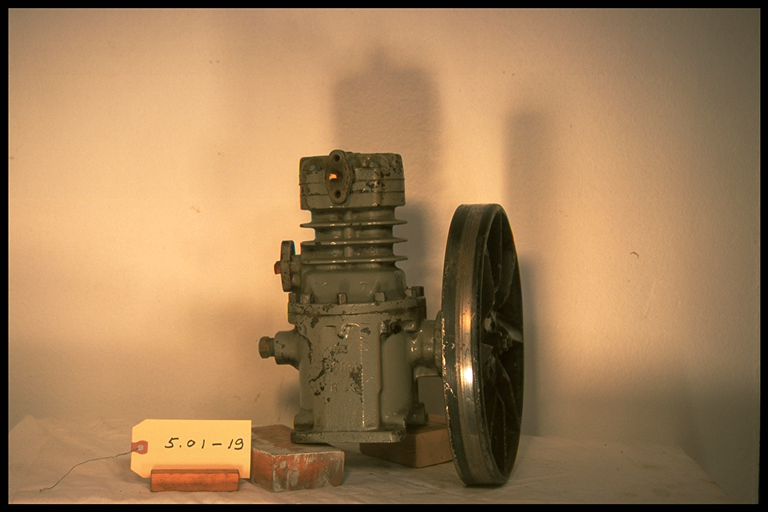5.01-5A: Kelvinator 1932 Compressor
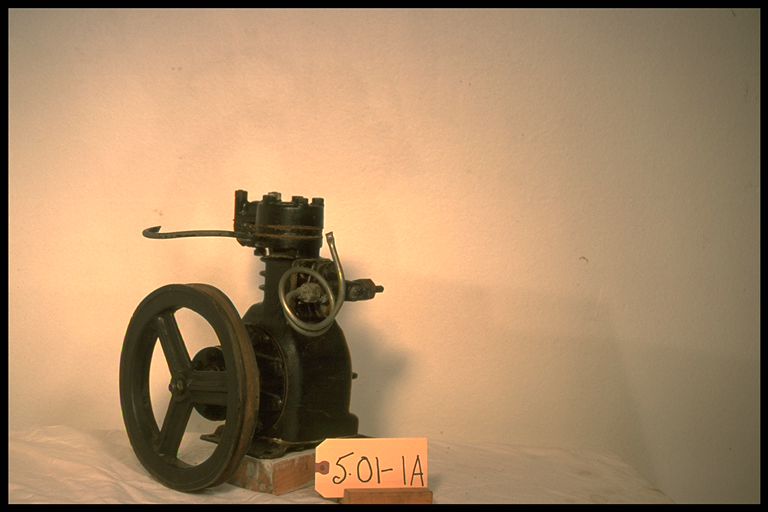
| HHCC Accession No. 2003.091 | HHCC Classification Code: 5.01-5A |
|---|
Description:
By the early 1930’s the Canadian refrigeration industry was moving beyond its embryonic years into a period of early development. Compressors were becoming much more “domesticated” in appearance, as pioneer manufacturers, such as Kelvinator, moved confidently into what appeared to be a promising, growing market. The Kelvinator Model A, still faster and smaller, would help to move the cabinet refrigerator into middle class and working Canadian homes [see #003], well beyond the exclusive realm of the country’s elite, Kelvinator 1932.
Group:
5.01 Refrigerating and Air Conditioning Compressors - Household
Make:
Kelvinator
Manufacturer:
Kelvinator of Canada
Model:
A
Serial No.:
Size:
8.5x10x 11’h
Weight:
30 lbs
Circa:
1932
Rating:
Exhibit, education, and research quality, demonstrating the design, form and construction of an early 1930’s refrigeration compressor, increasingly to be found in Canadian middle class and working households
Patent Date/Number:
Provenance:
From York County (York Region) Ontario, once a rich agricultural hinterlands, attracting early settlement in the last years of the 18th century. Located on the north slopes of the Oak Ridges Moraine, within 20 miles of Toronto, the County would also attract early ex-urban development, to be come a wealthy market place for the emerging household and consumer technologies of the early and mid 20th century.
This artifact was discovered in the 1950’s in the used stock of T. H. Oliver, Refrigeration and Electric Sales and Service, Aurora, Ontario, an early worker in the field of agricultural, industrial and consumer technology.
Type and Design:
Construction:
Material:
Special Features:
Accessories:
Capacities:
Performance Characteristics:
Operation:
Control and Regulation:
Targeted Market Segment:
Consumer Acceptance:
Merchandising:
Market Price:
Technological Significance:
This single cylinder, reciprocating compressor, of similar but significantly more advanced engineering than 5 years earlier, was small and high speed, by comparison [fly wheel diameter was reduced by Kelvinator from 14’ to 8.5’] and much quieter in operation
By now condensing units were also smaller, much more polished in appearance, and routinely designed for inclusion in the base of the household cabinet refrigerator. Although many would still be “remoted” in the basement by the local refrigeration mechanic.
Substantial manufacturing facilities came to maturity in this period to supply the specialized developmental needs of firms such as Kelvinator and Frigidaire. A significant new industrial sector had been born, patterned after the exploding automobile industry of the times.
These were the years, too, of the birth of the refrigeration trade in Canada. Manufacturers were dependent on informed and trained workers for installation and providing the all to frequent service needed - and knew it.
The reciprocating compressor, its engineering challenges not-with-standing, would remain largely the standard of the industry throughout the 20th century, although alternative rotary designs would appear on the market and be sustained for brief periods, from time to time.
Industrial Significance:
While designed for sulphur dioxide these compressors, built with amazing precision and to close tolerances for the period, would see life over the next 20 years and more, on refrigeration machines converted to new chlorinated hydrocarbon refrigerants. The Model A would be a standard of the industry up to the late 1930’s and the advent of the sealed, ‘hermetic’ motor compressor
Socio-economic Significance:
Socio-cultural Significance:
Donor:
G. Leslie Oliver, The T. H. Oliver HVACR Collection
HHCC Storage Location:
Tracking:
Bibliographic References:
Kelvinator Service Manual, December 1933 Edition, Kelvinator of Canada, London Ont., T. H. Oliver Collection
Notes:
Related Reports:
A Celebration Of Canadian HVACR Technology Canada’s First Half Century, 1900 To 1950. A Special Exhibit Of Historic Artifacts Prepared For The CMX 2002 Show Toronto, March 21-23, 2002, Catalogue, HVACR Heritage Centre Canada, Sponsored by The Founding Committee
